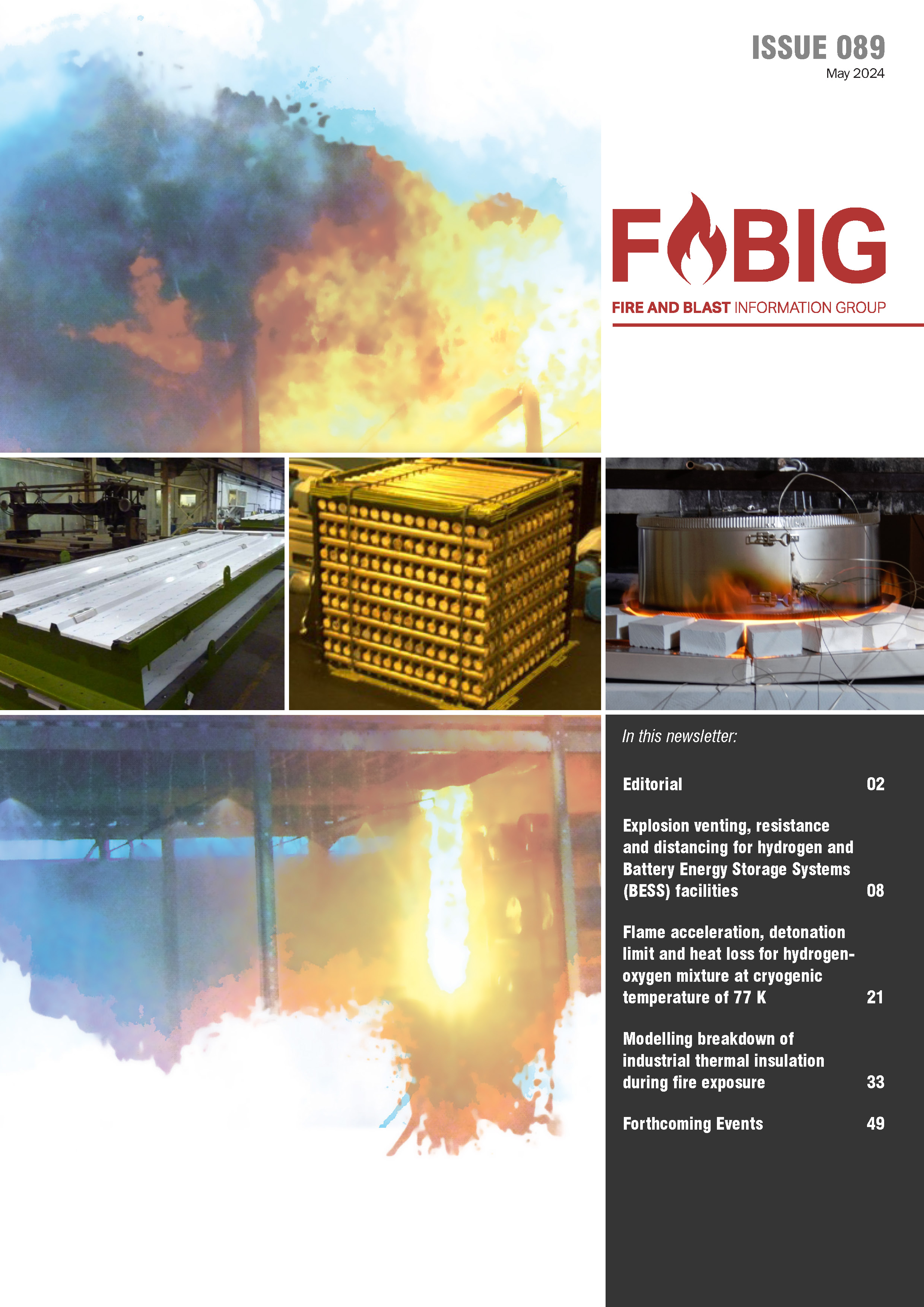Newsletter Issue 089

FABIG Members: Log-in to access all FABIG resources LOG IN
CONTENTS:
This FABIG Newsletter comprises the following:
- Editorial: Next 2-day Technical Meeting to be held on 23rd & 24th October
G. Vannier - The Steel Construction Institute (SCI) - Explosion venting, resistance and distancing for hydrogen and Battery Energy Storage Systems (BESS) facilities
R. Brewerton - Inoventech
This article discusses in detail key fire and explosion mitigation techniques for hydrogen facilities and highlights hydrogen-specific considerations. A related presentation was given at FABIG Technical Meeting 107 (view the video recording here). - Flame acceleration, detonation limit and heat loss for hydrogen-oxygen mixture at cryogenic temperature of 77 K
X. Shen1, W. Fu2, S. Zhang2, H. Liu3, J. X. Wen1 - 1Fire and Explosion Modelling Group, Institute for Sustainability, University of Surrey, 2School of Resources & Environmental Engineering, East China University of Science and Technology, 3Shanghai Engineering Research Center of Coal Gasification, East China University of Science and Technology
The accidental release of liquid hydrogen poses a risk of combustion and explosion. The risk is made more acute due to the increasing use of liquid hydrogen. However, there is very limited research on flame acceleration and detonation at cryogenic temperature and this leads to uncertainty when it comes to prevention and control of cryogenic temperature hydrogen explosion accidents. This paper therefore investigates flame acceleration and detonation at a cryogenic temperature of 77 K to provide some useful cryogenic temperature experimental data for establishment of relevant theories and numerical simulation verification. - Modelling breakdown of industrial thermal insulation during fire exposure
A. Gunnarshaug1,2, T. Log3,4, M.-M. Metallinou3 and T. Skjold2 - 1Q Rådgivning AS, 2Department of Physics and Technology, University of Bergen, 3Fire disasters research group, Department of Safety, Chemistry and Biomedical Laboratory Sciences, Western Norway University of Applied Sciences, 4Gassco Inc., Norway
This paper describes the development of a numerical model for predicting the heat transport through the multi-layer wall of a distillation column exposed to fire. The outer surface is covered by stainless steel weather protective cladding, followed by PFP, thermal insulation, and finally an inner column of carbon steel of variable thickness. The model for the breakdown of thermal insulation is based on observed dimensional changes and independent measurements of the thermal conductivity of the insulation after heat treatment. The calculated temperature profiles of thermally insulated carbon steel during fire exposure are compared to fire test results.
Non-member price: £75.00
Add to Basket
Published in: May 2024
Keywords:
Explosion relief panels for hydrogen and BESS / Hydrogen-oxygen mixture at cryogenic temperatures / Flame acceleration / Detonation limit / Heat loss / Modelling PFP during fire exposure
Online purchase options:
Non-Members of FABIG are able to purchase PDF copies of the FABIG Newsletters.